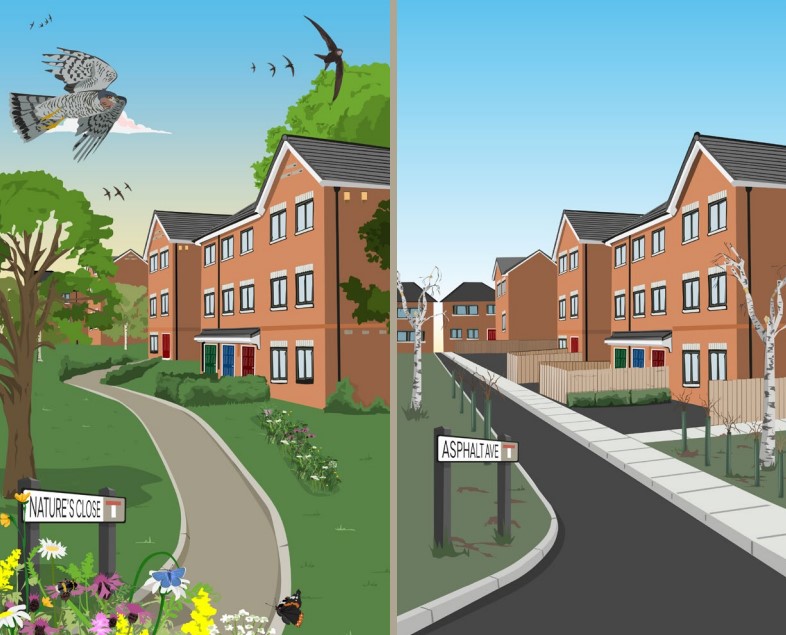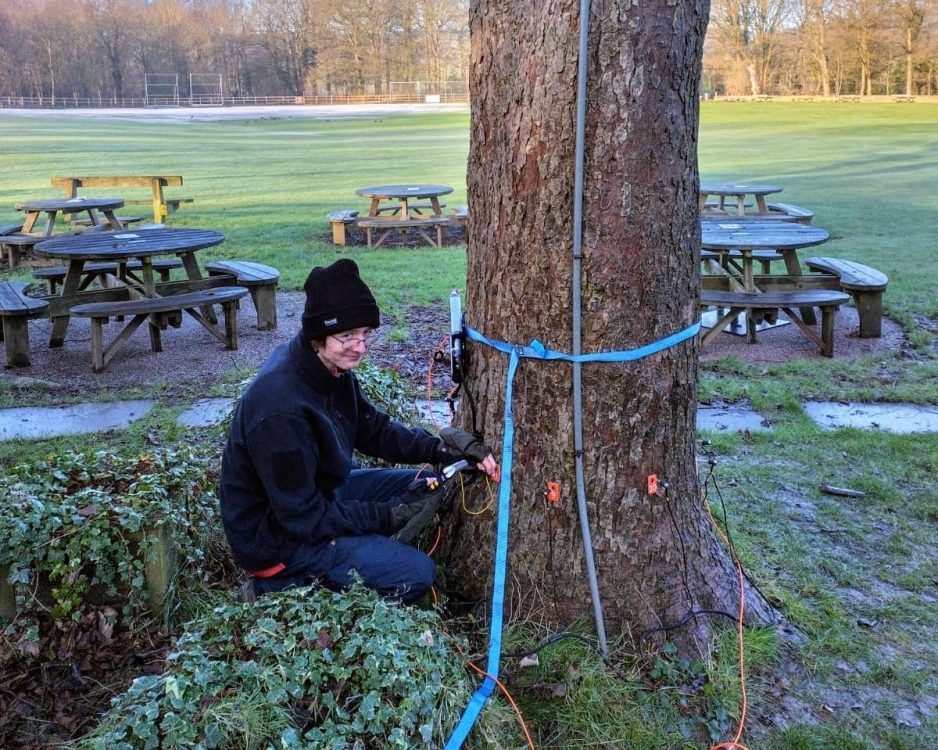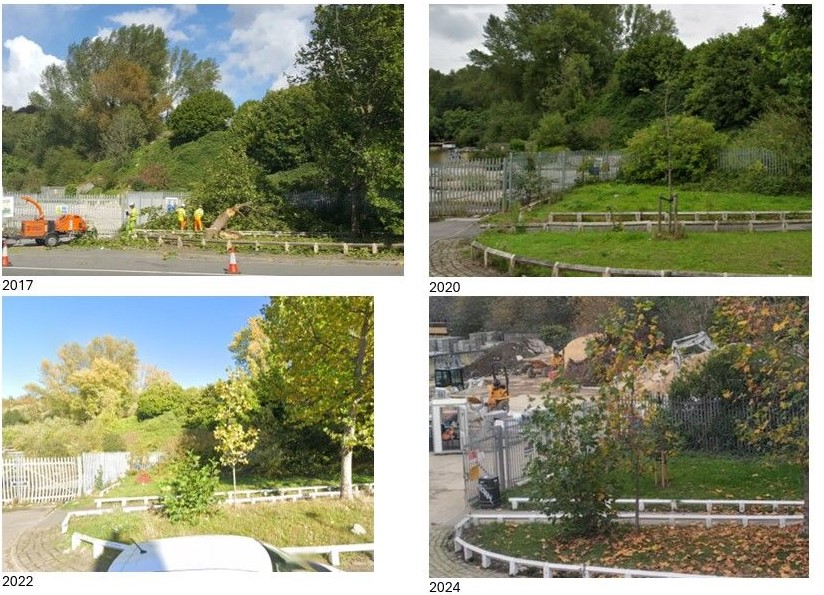
AWA Tree Consultants Limited welcomes Lucy to the team.
5th November 2022
UK trees catch double the carbon
5th January 2023AWA Tree Consultants Ancient Tree Trip in North Yorkshire
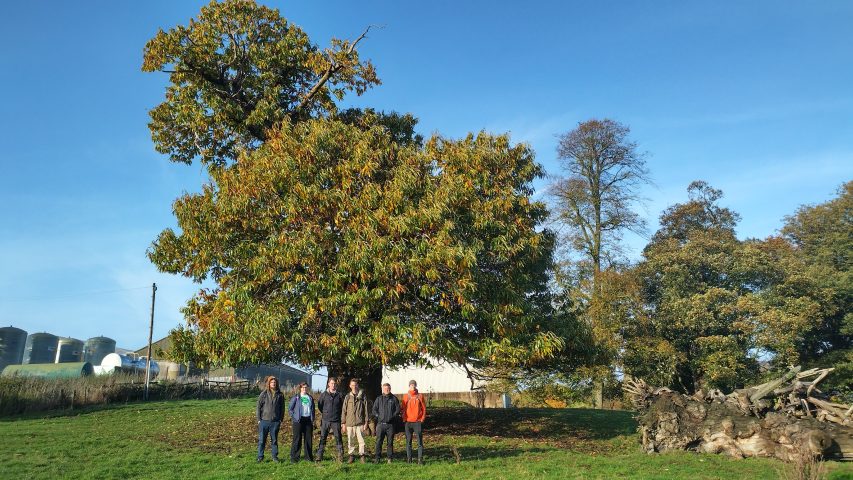

The AWA tree survey team recently went along to the Ancient Tree Forum’s Autumn Field Trip, held on the Castle Howard Estate in North Yorkshire.
The Ancient Tree Forum (ATF) is the only organisation in the country specialising in the conservation of ancient and veteran trees. This was the first in-person Ancient Tree Forum’s field trip since before the pandemic and as with most ATF events, tickets sold out faster than an Arctic Monkeys tour! The day was split into a morning session around the Yorkshire Arboretum, and an afternoon session around the wider farmed Estate land.
The morning tour of the Yorkshire Arboretum was with Michael Bott, Principal Forester at Castle Howard Estates and Dr John Grimshaw, Director of The Yorkshire Arboretum, and their colleagues. They showcased some of the collection of more than 7,000 trees from around the world. Most of which are relatively young (in ATF terms!) having been purchased in 1979 from Hillier Nurseries, Hampshire. The tree collection is exceptionally well labelled, highlighting the difference from a tree collection of ornamental interest only, to one with real scientific value.
The large collection of semi-mature trees were planted around a good distribution of mature (200+yr) Oaks and Sweet Chestnuts. However, the ancient and veteran trees were few and far between within the main Yorkshire Arboretum grounds.
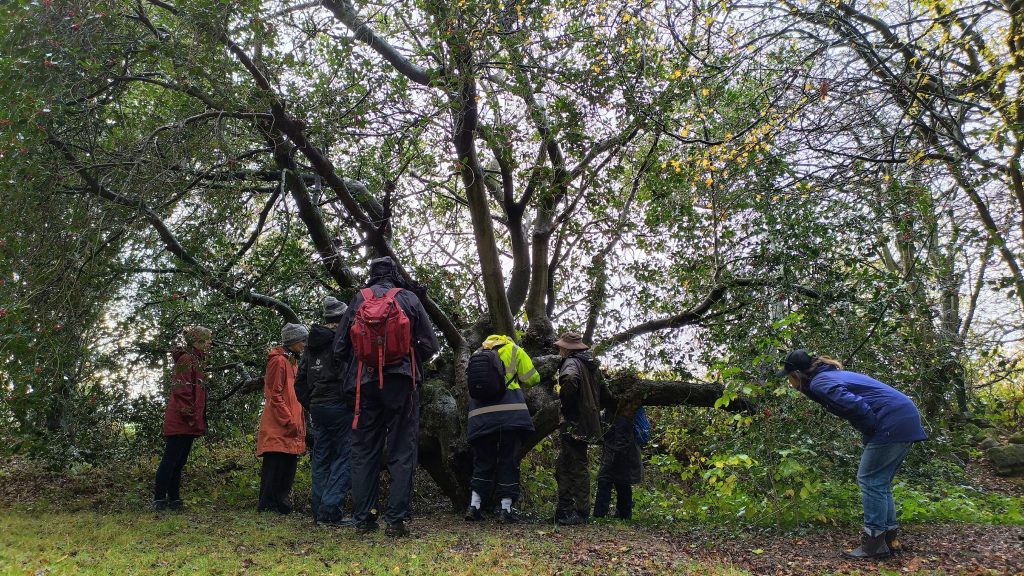
One of the few true ancients was a gnarly Holly, hidden away by the estate boundary wall. Discussions were had about its history, it was noted how it may have once fallen over and had righted itself, and possibilities of careful halo thinning to reduce competition from its younger neighbours.
The tour included a very old – but possibly not ancient – Oak tree stump, which had been felled due to significant limb failure. This led to some robust discussion: Was felling to ground level the only – or most suitable – management option? Perceived tree risk vs actual risk of harm? Management of large trees with limited budgets? It was accepted that the management team made decisions with the best intention with the resources available. However, it was apparent that when managing trees on parkland a tension can arise between arboricultural/ecological management objectives vs management of the land for landscapes and people.
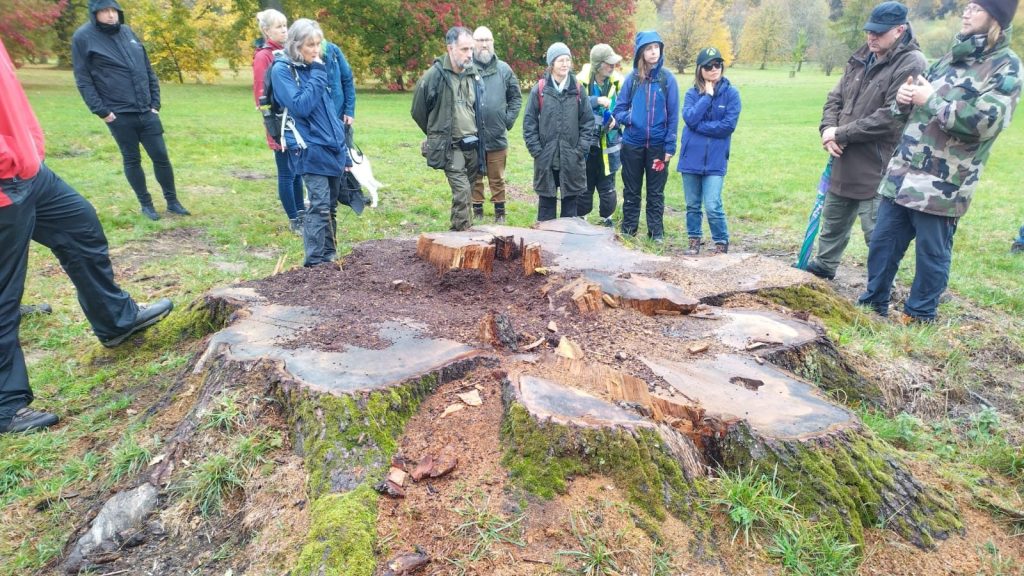
Stumped
The afternoon session visited some wonderful ancient and veteran trees on the Castle Howard farmed Estate land. Speakers from the ATF expert panel, and former and current Estate forestry team, guided us to some hidden gems of ancient and veteran trees. Some fascinating discussions were had, including the power of language when using terms to describe ancient trees. Should retrenchment become known as re-organising? What is the difference between Wood Pasture and simply a grazed field with scattered trees? The discussions then focused on land use and farming methods and the impact this was having on the ancient trees. Negative pressures, including over grazing/stocking and the associated impact on ground compaction and soil nutrient levels, ‘improved’ grassland via fertilizer and herbicide and the impact this has on the fragile mycorrhizal associations.
It was acknowledged that tenant farmers who have managed land – often for generations – may need some persuasion, both financially and culturally, to change the way they manage the land around these trees.
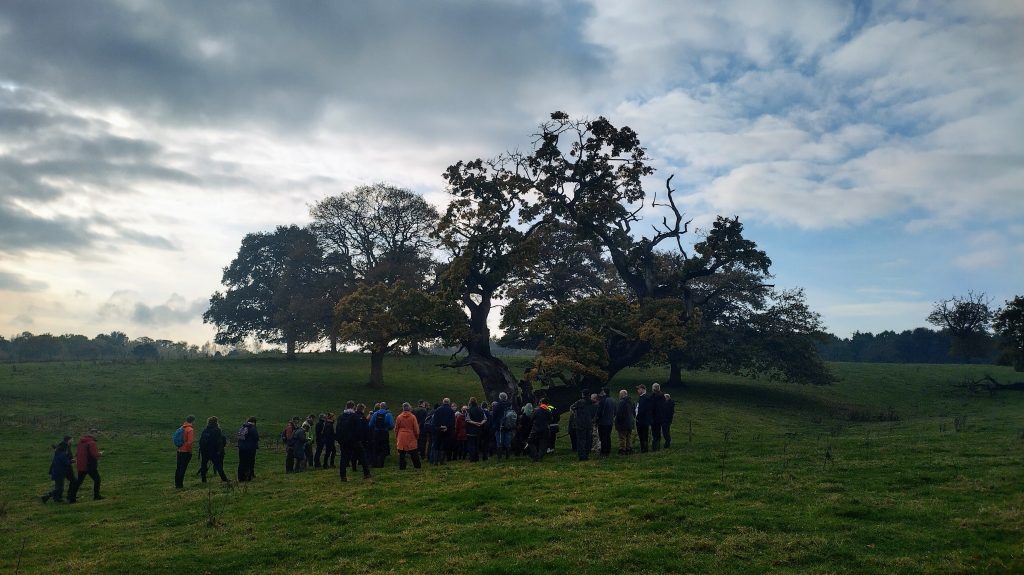
Feeling the pressure
Driving back to Sheffield, we reflected on the day and the issues raised. For most of us at AWA our day-to-day work often involves preparing and managing tree protection schemes on development sites, so our first instinct was to focus on practical tree protection methods for these ancients. Never mind a Construction Exclusion Zone (CEZ) how about a Farming Exclusion Zone (FEZ) or even a People Exclusion Zone (PEZ)!?
While the example of the Knepp estate was touted as a hopeful example of tree-friendly land management, and novel methods such as periodic ‘nomadic’ type grazing, or a few highland cattle, were detailed, these will seem a major shift for many farms and estates. In the meantime these irreplaceable assets are often facing irreversible damage.
Providing a physical barrier around the Root Protection Area (RPA) of these trees would be a simple, low cost, and impactful intervention. Chestnut fencing, possibly even combined with a dense native hedge, could provide an attractive barrier and important shrub component to the landscape. We felt that something along these lines would be more readily tolerated by a farmer who would lose only a very small percentage of land and could otherwise carry on without any major threat of change to their farming methods.
Other, more random, thoughts on the drive home included, could the Ancient Tree Forum act in a similar way to the Soil Association or the Forest Stewardship Council, whereby they provide ‘ATF certification’ to farms and site managers that manage their land in a way that is beneficial to ancient and veteran trees.
Having a ‘ATF certification’ would provide assurance to visitors to sites, or customers, that the sites meet high standards or best practice in managing ancient trees. An ATF certification logo could be displayed on packing, websites and marketing activities. This could provide advantages and opportunities for businesses who are committed to producing food, or managing land, in a way that benefits ancient and veteran trees.
Overall, it was an excellent day out for the AWA tree survey team. The message from the ATF event was that this is a critical time for these globally important living monuments and their protection is crucial.


